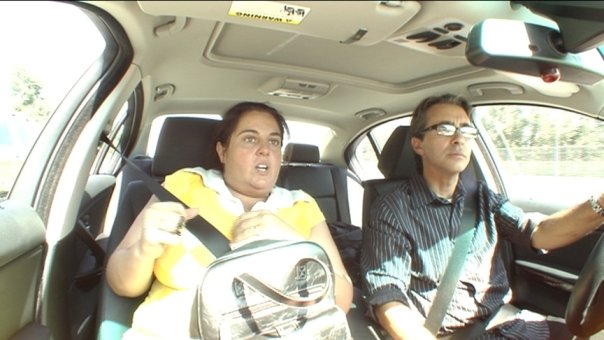
I’m not one to stay up and watch TV. For one, I have to practice good sleep hygiene so I can preach that message to you guys. But A&E’s documentary series, “Obsessed” piqued my interest because it exposes viewers to the lives of every day folks battling OCD, panic disorder, social anxiety disorder, hoarding, and a healthy variety of phobias. The unscripted series educates the public on how one measly obsession can totally mess up a life if the biochemistry isn’t controlled (of course, I already know that). So I wanted to interview the show’s therapist, John Tsilimparis, about the series and about the experience of being watched by millions as he conducted therapy.
Question: What is the primary message that you would like viewers to get from the therapy sessions on Obsessed?
John: My belief is that the TV Documentary, “Obsessed” will help infuse and subsequently establish the long-awaited credibility that OCD and other anxiety disorders are legitimate illnesses. The show will heighten public awareness and deepen social understanding about the condition of OCD in particular, and will help put it on the map of illnesses to be reckoned with. It will also encourage the many thousands of anxiety disorder suffers out there to come out from hiding and seek help.
Question: What do you think are the three most prevalent misconceptions about OCD among the public?
John: One of the enduring misconceptions about OCD and anxiety disorders in general is that people with OCD are weak-willed and that their symptoms are a result of some kind of moral failing. Anxiety disorders are unfortunately still stigmatized by the many people out there who can’t understand the illness due to lack of information and often times, lack of personal experience. Another misconception is that people with severe OCD cannot live productive lives. OCD is in fact, a very treatable illness, regardless of the severity of symptoms. Many sufferers out there, through therapy and medication, live happy and productive lives despite their illness. However, it is important to remember that the treatment modality used by many clinicians, CBT, does not seek perfection. CBT combined with Exposure therapy helps sufferers build a solid program of anxiety management aimed at reducing the severity and frequency of symptoms and improving quality of life. Trying to erase all traces of anxiety is impossible. One always needs a bit of anxiety and worry to survive in the world.
Question: What was the most challenging part of conducting therapy in front of America? Did you change any aspects of how you normally administer your sessions?
John: I believe so passionately in the value and effectiveness of the work that I do, that I did not find it necessary to change anything about the way I treat patients. It was quite gratifying to know that I was part of a groundbreaking TV series that would inspire hope for sufferers in hiding, and would also educate America and beyond, that anxiety disorders are very common and most importantly, very treatable.
To read more Beyond Blue, go to http://blog.beliefnet.com/beyondblue, and to get to Group Beyond Blue, a support group at Beliefnet Community, click here.
To subscribe to “Beyond Blue” click here.
![]()
